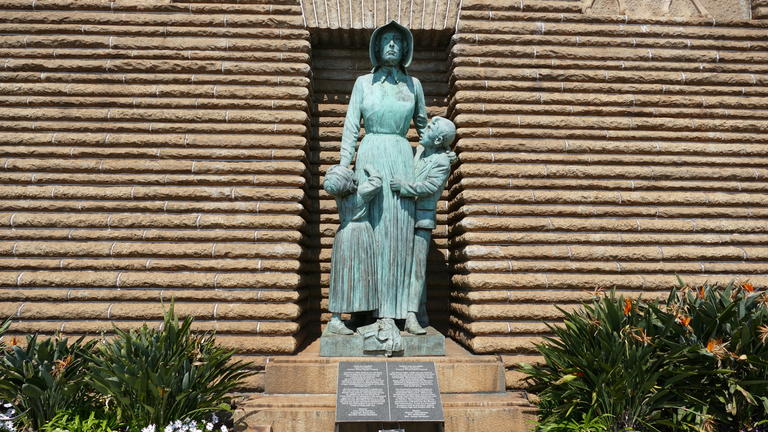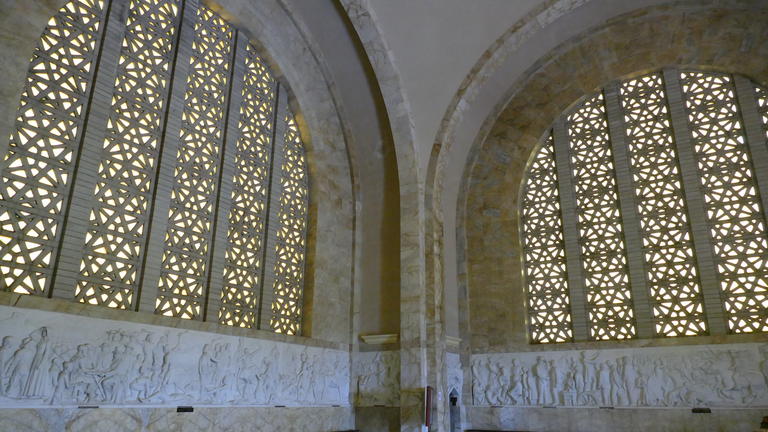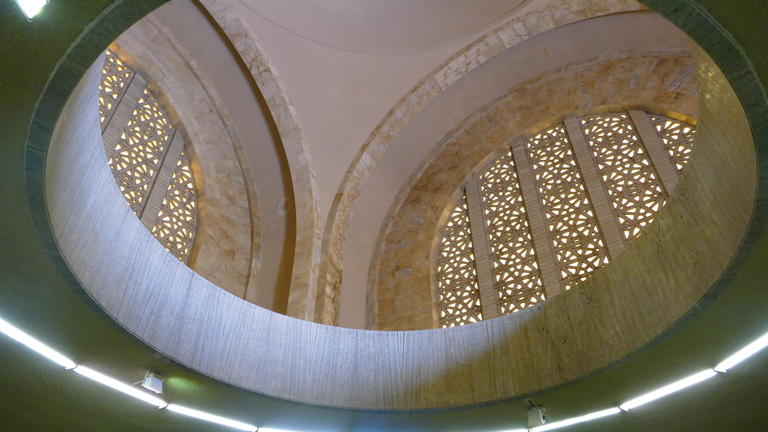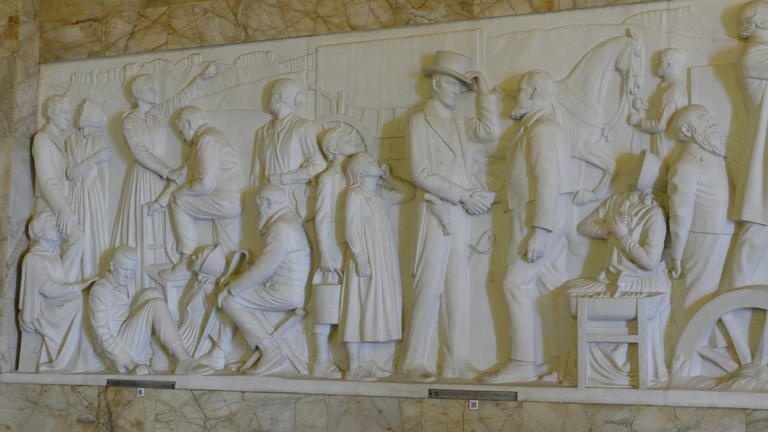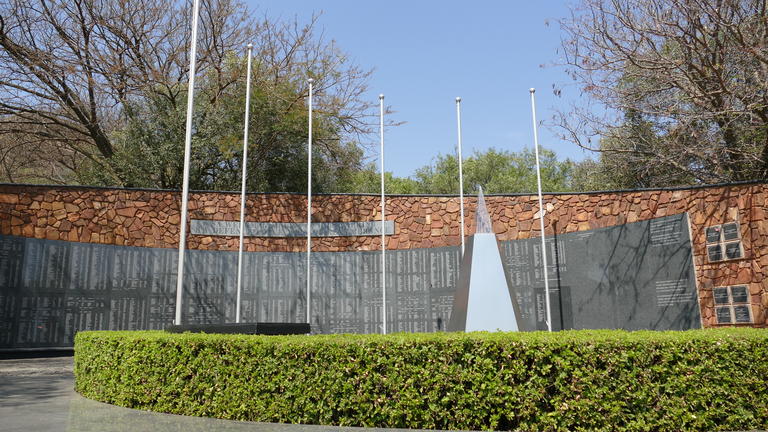The Voortrekker Monument, just south of Pretoria is predominantly a commemoration of the Voortrekkers who, between 1835 and 1854, travelled north to find arable, well-watered land and separate themselves, if possible, from the British who then ruled the Cape Colony. There had been a small trickle of people moving north for over 150 years, but 1835 saw the start of a much larger ‘trek’ (a migration of a group of settlers by ox wagon). Anti-slavery laws, the equal rights granted the Khoikhoi and other free African people in the Cape were not laws the white Afrikaners of the time could stomach. Their informal, local courts had been abolished and the British government appointed resident magistrates instead. English was now the only legal language that could be used in court.
Apparently deeply religious, the Voortrekkers had discussed building a monument to honour God for looking after them as they travelled north as far back as 1888. Seventeen years before Apartheid became a legal system of government in South Africa, the building of the monument began. Paid for by the South African government, it was the apartheid prime minister D.F. Malan who inaugurated the building.
Much of the building is rooted in Masonic symbolism, especially the central area known as the Cenotaph. Every year, on 16 December, at 12 mid-day, the sun shines through a hole in the ceiling onto the Centre of the Cenotaph, a slab resembling a tomb, and highlights the words 'Ons vir Jou, Suid-Afrika' (Afrikaans for 'Us for You, South Africa'). This light is said to symbolise God's Blessing on the Voortrekkers. Historically, 16 December 1838, was the date of the Battle of Blood River, where they believe God rescued the Voortrekkers from annihilation by the Zulus. It became known as the Day of the Vow. This public holiday was changed to the Day of Reconciliation after South Africa’s independence in 1994.
Today, it is seen by white Afrikaners as a heritage conservation site and a cultural home for the white Afrikaans people.
Since its construction, an indigenous garden, a Wall and Garden of Remembrance, a nearby fort and amphitheatre, and a nature reserve have been added.



